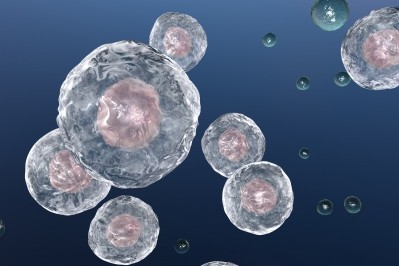ReciBioPharm’s Edita Botonjic-Sehic, on analytics, AI, and continuous RNA manufacturing

ReciBioPharm’s Head of Process Analytics and Data Science, Edita Botonjic-Sehic, takes us through how analytics and artificial intelligence are spurring the adoption of more efficient continuous manufacturing processes.
The development of RNA therapeutics has seen a huge expansion in recent years, with recent approvals including Dicerna Pharmaceuticals’ Rivfloza for the treatment of primary hyperoxaluria and Ionis Pharmaceuticals’ Wainua for the treatment of transthyretin-related hereditary amyloidosis. And there are another 1,072 therapies currently in the pipeline. This surge in demand has driven a growing need to enhance manufacturing processes, particularly in terms of speed and quality.
Biopharmaceutical manufacturing has traditionally relied on batch processing, where materials are mixed in a reactor and each batch must be finished before the team stops the process and moves onto a subsequent batch. Over the decades, the industry has seen the rise of a more efficient format called continuous manufacturing, where there is less need for wasteful downtime. Nonetheless, continuous manufacturing requires more precise and robust controls than batch operations to make the same product, which can make it difficult to move to continuous production.
In an interview with BioPharma Reporter, Edita Botonjic-Sehic, Head of Process Analytics and Data Science at Recipharm’s advanced and emerging therapies business unit ReciBioPharm, discusses how the adoption of continuous RNA manufacturing processes can be made smoother with the help of process analytic technologies, automation and real-time data analytics.
What is driving the transition from traditional batch manufacturing to continuous manufacturing?
While batch manufacturing is well established and many biopharma companies have regulatory approval for their therapies using this technique, it’s increasingly recognised as a bottleneck in production processes. Batch manufacturing can potentially take weeks to complete, and scaling production is limited to bioreactor size and how quickly batches can be turned over.
As a result, the biopharma industry is looking to continuous manufacturing as a solution. Some of the benefits of this method relative to batch manufacturing include reduced manufacturing costs, faster production times, lower risk of human error, reduced scaleup investment and improved product quality.
Despite the advantages of continuous manufacturing, its wide adoption for commercial biologics production by the biopharma industry has been slow. However, this could quickly change with the encouragement of regulatory bodies such as the International Council for Harmonisation and the U.S. Food and Drug Administration (FDA), which recognise the benefits continuous manufacturing processes can bring to the biopharma industry. In fact, in 2023, the U.S. FDA supported a project to enable the development of a fully integrated continuous RNA platform.
What role will process analytic technologies play in enhancing RNA production through continuous manufacturing?
Throughout drug production — including RNA therapeutics — data collection plays a pivotal role. It serves as evidence of the product’s quality and demonstrates that the manufacturer has adhered to the critical quality attributes (CQAs), in other words, product characteristics that need to be within set limits such as the product’s size, charge and oxidation. Regulatory bodies require this data to ensure the drug is effective and safe for patients.
Understanding the properties of the RNA therapeutic and the potential impact of changing process parameters during production requires suitable, specific analytical methods to monitor and control the production process effectively.
In traditional batch manufacturing, developers will conduct many of these assays offline, in a remote laboratory, where samples are manually retrieved and evaluated. Offline assays, such as those needed to determine how pure the RNA therapeutic is, can take days to complete. Real-time monitoring and measurement of CQAs are made possible by the advancement of analytical technology capabilities and real-time data analytics through inline, online and at-line process analytic technologies. This is a vital component of continuous manufacturing.
Process analytic technologies can reduce the manual labor of measuring CQAs through automation, eliminate time-consuming manual sampling steps and remove the travel time associated with sending samples to external laboratories. As a result, what previously took two weeks of offline analyses can now be completed in a matter of days.
How do process analytic technologies enhance continuous manufacturing?
First, adopting inline or online alternatives can reduce the risk of human error and ensure an uninterrupted manufacturing process. This approach reduces the need to take samples, conduct analyses and move them between manufacturing and analytical suites, helping to reduce the possibility of contamination or damage caused by manual handling.
Second, it can significantly reduce the number of employees needed by minimising the time spent analysing samples, thereby reducing operator needs. And finally, drug developers and manufacturers using process analytic technologies can minimise batch failures, drastically reduce the need for samples pulled from the process for analysis that would ultimately be discarded, and eliminate material waste.
How can RNA therapeutic developers adapt their continuous manufacturing approaches as demand for RNA therapies rises in the future?
As the industry moves towards “Industry 5.0” with agile process needs, they need robust implementation strategies to reap the benefits of inline process analytic technologies, automation and real-time data analytics.
Leveraging data analytics, machine learning and artificial intelligence, RNA therapy producers can create models for real-time monitoring and control throughout the processing chain. In silico models can simulate real-world events, allowing proactive identification of risks associated with CQAs falling outside defined ranges. Additionally, these models can enable the determination of trends that could lead to CQA deviations, allowing process development adjustments accordingly. As a result, drug developers and manufacturers will be able to proactively minimize failure risks, reduce waste and ensure a higher quality product.
The RNA therapeutic space is relatively new — how will this impact the transition from batch to continuous manufacturing?
Implementing continuous manufacturing for monoclonal antibodies — an already well-established production process — often requires substantial investment due to necessary infrastructure changes. However, in the relatively new field of RNA therapeutics, applying continuous manufacturing is potentially less complex. This is because developers have the opportunity to design and construct continuous manufacturing lines from the ground up, bringing greater flexibility and potentially reducing investment requirements.
However, RNA drug developers and manufacturers still need to carefully consider how they will ensure their processes are robust, flexible and compliant while withstanding the test of time. This will involve establishing a continuous manufacturing process as a baseline as well as identifying the right process analytic technologies tools, automation architecture and digital models to go with it.
What does the future hold for process analytic technologies in continuous RNA manufacturing?
As the biopharmaceutical industry continues to embrace digital transformation, the future of RNA manufacturing holds tremendous promise. By leveraging process analytic technologies, automation and real-time data analytics, drug developers and manufacturers can optimise their continuous manufacturing processes, achieving higher efficiency, improved product quality and reduced costs. The integration of machine learning and artificial intelligence will further enhance process understanding and control, enabling predictive and proactive decision-making.
As the RNA therapeutic landscape evolves, we can anticipate continuous manufacturing to become the gold standard, offering greater agility and flexibility in meeting the growing demand for innovative and life-saving RNA therapies.

















